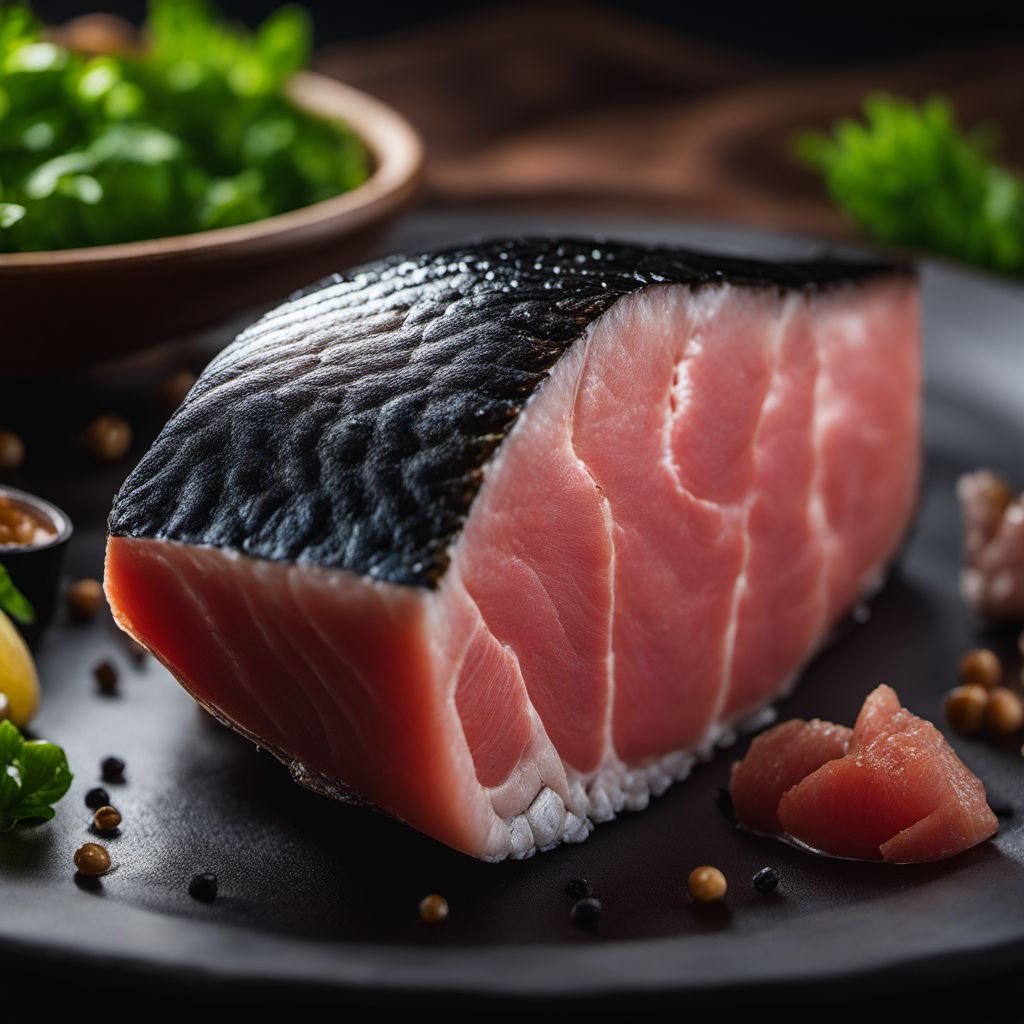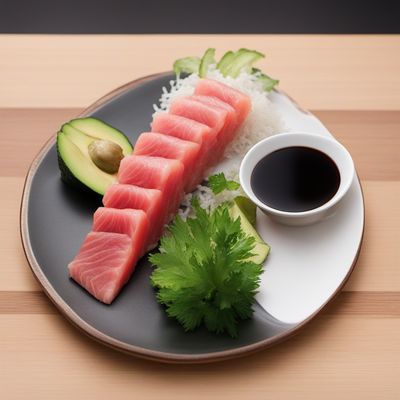
Ingredient
Tuna, blackfin
The Ocean's Delicacy: Exploring the Richness of Blackfin Tuna
Blackfin tuna, scientifically known as Thunnus atlanticus, is a species of tuna found in the Atlantic Ocean. It has a streamlined body with dark blue-black coloring on its back and silver-white on its belly. The flesh of blackfin tuna is firm, lean, and has a deep red color. Its texture is smooth and slightly oily, making it ideal for both raw and cooked preparations. With a mild and slightly sweet flavor, blackfin tuna offers a delicate taste that is less overpowering than other tuna varieties.
Origins and history
Blackfin tuna is native to the western Atlantic Ocean, particularly the Gulf of Mexico and the Caribbean Sea. It has been an important part of the region's culinary traditions for centuries. Historically, blackfin tuna was primarily caught by commercial and recreational fishermen, but its popularity has grown, leading to increased commercial fishing efforts. Today, it is highly sought after by both professional chefs and seafood enthusiasts.
Nutritional information
Blackfin tuna is a nutritional powerhouse, rich in protein, omega-3 fatty acids, and essential vitamins and minerals. A 3-ounce serving of blackfin tuna provides approximately 100 calories, 22 grams of protein, and is a good source of vitamin B12, selenium, and niacin.
Allergens
Blackfin tuna may pose a risk for individuals with fish allergies.
How to select
When selecting blackfin tuna, look for fish with clear, bright eyes, shiny skin, and a fresh, oceanic smell. The flesh should be firm to the touch and have a vibrant red color. Avoid any fish with dull eyes, discolored flesh, or a strong fishy odor.
Storage recommendations
To maintain the freshness and quality of blackfin tuna, it is best to store it in the refrigerator at a temperature between 32°F and 38°F (0°C and 3°C). Keep the fish wrapped in moisture-proof paper or plastic wrap and consume it within 1-2 days of purchase for optimal flavor.
How to produce
Blackfin tuna is typically caught in the wild by commercial or recreational fishermen. It requires specialized equipment and knowledge to catch and handle these fish properly. As such, it is not feasible for amateurs to produce blackfin tuna.
Preparation tips
Blackfin tuna can be enjoyed in various ways, including raw in sushi or sashimi, seared, grilled, or even canned. For raw preparations, ensure the fish is fresh and of high quality. When cooking, blackfin tuna is best when seared quickly over high heat to retain its moisture and flavor. It pairs well with citrus-based marinades, soy sauce, ginger, and sesame oil. Remember not to overcook blackfin tuna, as it can become dry and lose its delicate texture.
Substitutions
Yellowfin tuna or albacore tuna can be used as suitable substitutes for blackfin tuna due to their similar taste and texture.
Culinary uses
Blackfin tuna is a versatile ingredient used in a variety of culinary applications. It is commonly used in sushi, sashimi, ceviche, poke bowls, and salads. It can also be grilled, seared, or baked as a main course. The delicate flavor of blackfin tuna allows it to shine in both Asian and Western cuisines.
Availability
Blackfin tuna is commonly found in the Gulf of Mexico and the Caribbean Sea. It is also available in some coastal regions of the United States, such as Florida and Louisiana.
More ingredients from this category

Tuna, longtail
The Ocean's Swift Hunter

Tuna, skipjack
The Ocean's Bounty

Bullet tuna
The Speedy Predator

Tuna, bluefin (generic)
The Jewel of the Sea: Exploring the World of Bluefin Tuna

Tuna, bigeye
The Mighty Bigeye Tuna

Albacore
The Mighty Albacore

Tuna, yellowfin
"The Jewel of the Sea: Exploring the Delights of Yellowfin Tuna"
Recipes using Tuna, blackfin » Browse all

Caymanian Spiced Mojama
Caribbean Delight: Caymanian Spiced Mojama

Classic Niçoise Salad
Mediterranean Delight: A Vibrant Twist on the Classic Niçoise Salad

Taiwanese-style Avocado with Tuna
Tantalizing Tuna and Creamy Avocado Delight

Akumaki with a Twist
Savory Delight: Reinventing Akumaki

Mariana Islands-style Tuna Rissole
Tropical Tuna Delight: Mariana Islands-inspired Rissole

Honduran-style Tuna with Spicy Tomato Sauce
Savory Tuna Delight: A Spicy Honduran Twist

Chamchi Gimbap with a Twist
Seaweed-Wrapped Tuna Rice Rolls: A Flavorful Twist on Chamchi Gimbap

Maldivian Coconut Fish Curry
Tropical Delight: Maldivian Coconut Fish Curry

Maldivian Spiced Fish Soup
Savor the Flavors of the Maldives with Garudihya - Spiced Fish Soup

Turks and Caicos Tuna Sandwich
Island Delight Tuna Sandwich

Soulful Tuna and Green Onion Gunkan Maki
Soulful Tuna Delight: A Southern Twist on Japanese Gunkan Maki

Coconut Tuna with Aromanian Twist
Aromanian Coconut Tuna Delight